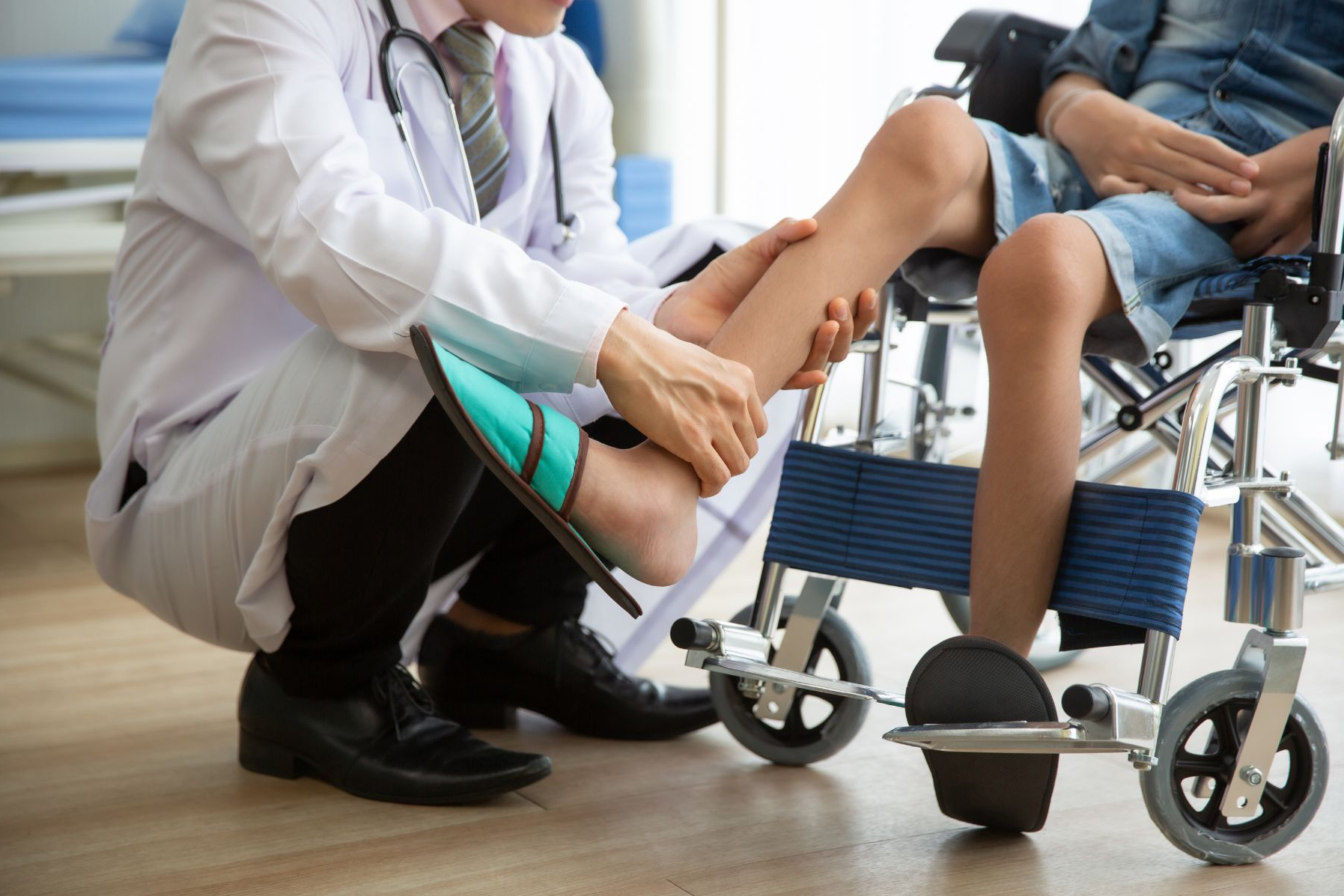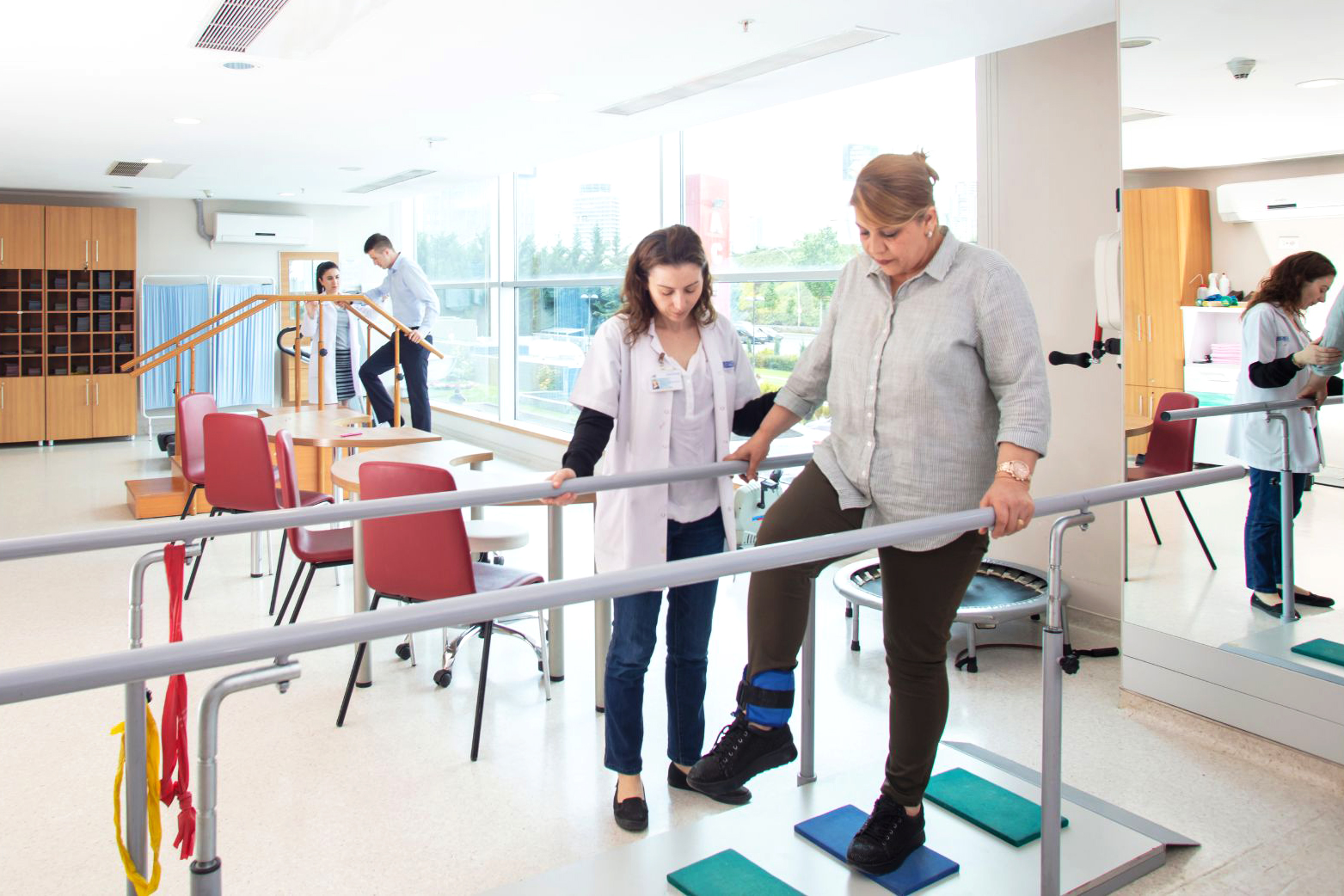
Spasticity therapy
Spasticity therapy
doc. MUDr. Yvona Angerová, MBA, Ph.D., Head of the Department of Rehabilitation Medicine at the VFN Prague and 1st Faculty of Medicine, Charles University
One of the most common issues in patients after brain injury is central paresis, which is the limitation of limb mobility. It is often accompanied by an increase in muscle tone, leading to what is known as spastic dystonia. With this condition, the limbs are held in an abnormal position to the joints due to increased muscle tone.
A typical posture for the upper limb is when it is held close to the body, with the elbow and wrist bent. The fingers, including the thumb, may also be curled into the palm. Often, significant external force is needed to extend the limb and fingers to a normal position. If the limb remains in this position for a prolonged period of time without regular stretching, a fixed contracture may develop. This means that stretching the muscles is no longer possible, even with substantial force. The joints become stiff, and surgery becomes the only way to release the shortened muscles and stiff joints. From the outset, we should strive to prevent such a situation.

A similar condition may develop in the lower limb, where the foot turns inward and the Achilles tendon shortens. This position of the limb prevents the patient from standing fully on the foot and significantly hinders or even prevents walking. Shortening around the knee area can also completely block independent standing and walking. Similar complications include the curling of the toes or big toe, which may be accompanied by painful calluses and discomfort.
Spasticity often begins to develop within the first few months after a brain injury, while you are still attending physiotherapy or in a rehabilitation program, where specialists are already addressing it. However, for some people, this complication may not appear until several months later, when they are no longer regularly attending rehabilitation.

This problem, however, can be managed effectively—it’s essential to access the appropriate treatment in time. If you are not currently attending physiotherapy and start experiencing muscle tightness and abnormal positioning of your limb joints, your primary care doctor should refer you to a neurologist or a rehabilitation physician. This specialist can then direct you to the nearest Spasticity Center. These centers are located throughout the Czech Republic and are often associated with Stroke Centers, or Centers of Highly Specialized Cerebrovascular Care and Highly Specialized Stroke Care Centers.
After an examination by the doctor, you will be referred to physiotherapists or occupational therapists who will carefully measure the angles of each joint in various positions and have you perform some everyday activities (such as lifting a bottle, brushing your hair, etc.). While performing these activities, you may be recorded on video to assess how you complete each task. Based on this detailed assessment, you will then be given exercises to do at home—independent exercises that you must perform regularly, often several times a day. These usually involve stretching the muscles that are shortening in precisely defined positions or performing quick, repetitive movements. Additionally, at most centers, you will receive a diary to take home where you’ll record how often, how long, and how successfully you complete the exercises. This part of the treatment is very important, as observing your progress can motivate you to continue with the activities.

Once you’ve received your assigned tasks, you’ll be scheduled for a follow-up appointment, during which the diary entries will be reviewed, all necessary angles will be re-measured, and your performance of each task will be tested again. Finally, a plan will be developed, and in consultation with the doctor, certain muscles may be recommended for botulinum toxin injections. This substance is considered the first-line treatment for spasticity. You might know it as “botulinum toxin,” and you may be concerned about whether it’s safe for you. However, there’s no need to worry—botulinum toxin has been used worldwide in healthcare for decades with excellent results, especially in treating spasticity.
The injection itself is administered at a specially equipped facility. The administering doctor will use an ultrasound device to help guide the injection precisely into the muscle. They often confirm the correct placement through what is known as stimulation. The needle, connected to a device generating electrical impulses, is inserted into the muscle. You will feel these impulses as tingling or burning sensations (some people compare this sensation to the feeling from an electric fence) and see that they cause limb movements similar to those produced by the stimulated muscle. This gives the doctor confidence that they are indeed targeting the intended muscle. After the injection, do not expect immediate effects. The medication requires some time to take effect. Generally, you’ll feel the first effects within a week, with the effect gradually increasing and reaching its peak in about a month. After two to three months, the increased muscle tone gradually returns, and you will be invited to see your physiotherapists for a follow-up evaluation, during which a decision may be made about another injection. For some, it is enough to inject the stiff muscles several times, along with intensive exercise, to improve limb positioning; others may need to continue the injections over the long term. It is crucial to emphasize that although botulinum toxin is the first-line treatment for spasticity, the primary responsibility of the treatment lies with the patient. Botulinum toxin relaxes the muscles to allow intensive exercise, which is the most important factor in restoring mobility. The toxin alone does not have the same effects without the patient’s active participation.

In some cases, the examination before the injection may not be as thorough. However, it is essential that you are always given exercises to do at home and that you understand how to stretch and exercise your limbs. You should be able to explain any improvements in performing daily activities after the injection and exercise and describe them specifically. This feedback is extremely important.
Spasticity treatment centers in Czech republic:
- Oddělení rehabilitační a fyzikální medicíny Ústřední vojenská nemocnice Praha
- Neurologická a RHB klinika FN Motol Praha
- Neurologická klinika FN Plzeň
- Neurologická klinika FN Hradec Králové
- Neurologické oddělení nemocnice České Budějovice
- Neurologické oddělení nemocnice Pardubice
- Neurologické oddělení nemocnice Liberec
- Neurologické oddělení nemocnice Chomutov
- Neurologické oddělení nemocnice Krnov
- Neurologické oddělení Jihlava
- Neurologické oddělení Uherské Hradiště
- Neurologické oddělení Zlín
- Neurologické oddělení nemocnice Vítkovice
- Neurologická klinika FN Ostrava
- Neurologické oddělení nemocnice Hořovice
- Neurologické oddělení nemocnice Opava


